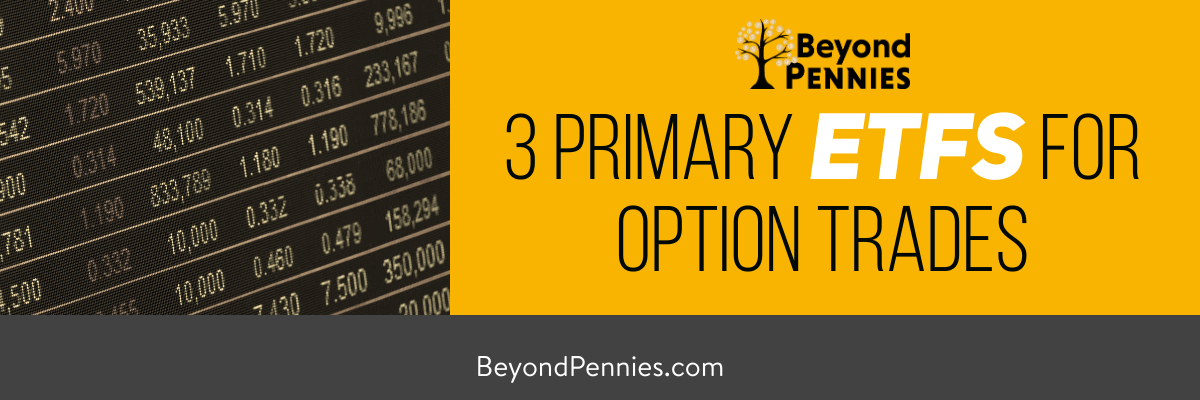What is an ETF?
An ETF is an Exchange-Traded Fund that investors can buy or sell shares of, much like normal stocks. Many investors like ETFs because they resemble a “basket of stocks” like mutual funds, so its an easy way to diversify a portfolio. There are many ETFs to choose from, some more well-known and popular than others. Some ETFs track the greater market, and some track with segments of the market. Some ETFs follow the movement of specific industries like oil, semiconductors, healthcare, etc, and some follow foreign markets. Option contracts are also available to buy or sell on ETFs, as with stocks.
Two Important Factors When Choosing ETFs for Option Trades
When choosing a stock or ETF for option trades, there are a couple of factors to pay attention to:
- Implied Volatility (IV) – Implied Volatility is the market’s forecast of a likely movement in an underlying stock or ETF’s price. When the market estimates a bigger move, an option contract price will have a higher extrinsic value, or higher IV. Options with higher IV are good for selling. Options with lower IV are good for buying.
- Liquidity – Liquidity refers to how easy it is to buy or sell a stock or ETF in the market, and it is measured by the Daily Trade Volume (DTV) of a stock or ETF. The higher volume of trades in a given stock or ETF, the easier it is to enter and exit a trade, and the smaller the spread between bid and ask prices.
The Top 3 ETFs for Option Trades
The following list of of ETFs are highly liquid,and have fluctuating IVs, so pay attention when you buy or sell where the IV is at before placing a trade. If you trade on tastyworks, it will show you what the stock’s IV is.
-
SPDR S&P 500 ETF (ticker: SPY)
The SPY is benchmarked to the top 500 largest publicly traded companies that make up the S&P 500. With more than $300 billion in assets, the SPY is highly liquid, trends with the overall market, and is a great entry-level ETF to dabble with. The SPY is one of the SPDR funds, often called the “spiders”, which are a family of funds traded the United States, Europe, and Asia-Pacific.
-
iShares Russell 2000 ETF (ticker: IWM)
The IWM tracks with the results of the Russell 2000 index, which measures the performance of the small-cap sector of the U.S. equity market. Because its mix of stocks is based on smaller companies than the S&P 500, it tends to be more volatile than the SPY. The IWM is often a leading indicator of market direction. Because of the added volatility, you can often find more premium in a IWM options trade than SPY to offset the additional risk.
-
Invesco QQQ Trust (ticker: QQQ)
The QQQ generally corresponds to the price action of the NASDAQ stock market by following the top 100 non-financial stocks of that market. This ETF is often less volatile than the IWM, and more similar to the SPY. One of the benefits of most ETFs is diversification, and that’s the case with QQQ, which means the price typically does not have large movements in short periods of time. However, there are always market events that can affect larger than normal moves.
Always protect your portfolio when making options trades by making small trades. My rule of thumb is to never risk more than 5% of my account on a single trade, and most trades are under 1% of my total capital.
Looking for a good brokerage for option trades? We recommend tastyworks!

